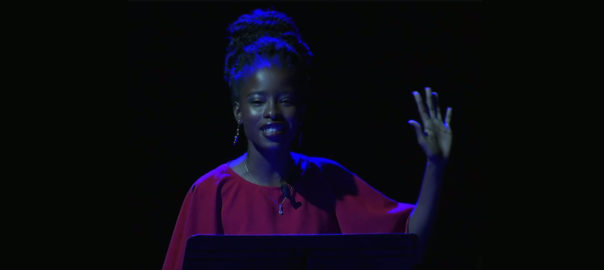The Social Good Summit: What Impact Do Future Generations Have on the SDGs?

The stage opened to the first-ever Youth Poet Laureate, Amanda Gorman, reciting her original poem, “The Gathering Place.” The poem perfectly captured the importance of youth in achieving the Sustainable Development Goals (SDGs) and what the summit was about: “gathering to do good, so the world might be great.”
On Sept 17, 2017, the United Nations Foundation, United Nations Development Programme, 92nd Street Y, and Mashable teamed up to bring the Social Good Summit back to New York City. The summit gathered together world leaders, global health advocates, social influencers, and artists from all over the world to discuss how we can positively impact future generations, and how technology and innovation can work to make the world better by 2030 through the achievements of the SDGs.
Amanda Gorman was not the only young person to present at the Social Good Summit. Muzoon Al-Mellehan, 19-years-old and the youngest UNICEF Goodwill Ambassador, discussed how children are the foundation of communities and that “without education, we are nothing.” Youth Observer to the United Nations (UN), Munira Khalif, shared her thoughts on the importance of having meaningful engagement with young people and that bringing them to the table will make progress on the Global Goals.
When we believe in ourselves, we can actually make a difference…no matter how old we are.–@UNICEF Goodwill Amb. @muzoonrakan1 #2030NOW pic.twitter.com/wGr3wSnHnF
— UN Foundation (@unfoundation) September 17, 2017
Youth action was again put in the spotlight when 18-year-old Angela Jiang, Girl Up Teen Advisor, had a conversation with musician Madame Gandhi on using social media as a platform to control your own narrative. Khaled Khatib, a 22-year-old cameraman for the Syria Civil Defense, used film as his platform to share stories of how his organization, The White Helmets, saved over 99,000 lives.
Youth today come in many forms, from artists to advocates to leaders. The Social Good Summit showed the world that anyone, big or small, can make a change for the better.
But youth were not the only ones to bring inspiration to future generations. Jayathma Wickramanayake, the UN Secretary General’s Envoy on Youth, and Caryl M. Stern, President and CEO of UNICEF USA, reiterated the importance of giving youth a voice and unlocking their potential to making the world a better place. Even award-winning actress, Whoopi Goldberg, encouraged everyone of all ages to take part.
Young people are taking the charge for the #GlobalGoals. They are the ones using #technology for good. —@UNYouthEnvoy #2030NOW pic.twitter.com/8hV1eIkqqn
— UN Foundation (@unfoundation) September 17, 2017
“These are young people with lives and dreams and we need to make sure their voices are heard.” – @CarylStern @UNICEF #2030Now pic.twitter.com/XIEqoKXkNK
— +SocialGood (@plus_socialgood) September 17, 2017
“You should help because you can” – @WhoopiGoldberg #2030NOW @socialgood @QuinnTivey pic.twitter.com/idaTA3NfqE
— The DHS Program (@DHSprogram) September 17, 2017
Not only have young people made their presence known at the Social Good Summit, but also in the data we collect. The DHS Program interviews youth age 15-24 on all DHS survey topics with a special focus on reproductive health, HIV/AIDS, gender issues, and education.
So what can you do to get started helping global youth gain a platform to speak? Get informed. Start with STATcompiler to compare trends in youth indicators across 90+ countries. Let’s continue to make progress in sustainable development through exploration of technology and digital media to make the world a better place by the year 2030.
If you missed the live event, you can relive the entire summit on Mashable’s Livestream page.
Photo caption: Youth Poet Laureate, Amanda Gorman, opens the 2017 Social Good Summit in New York with a poem. (Photo from the Social Good Summit Live Stream)

